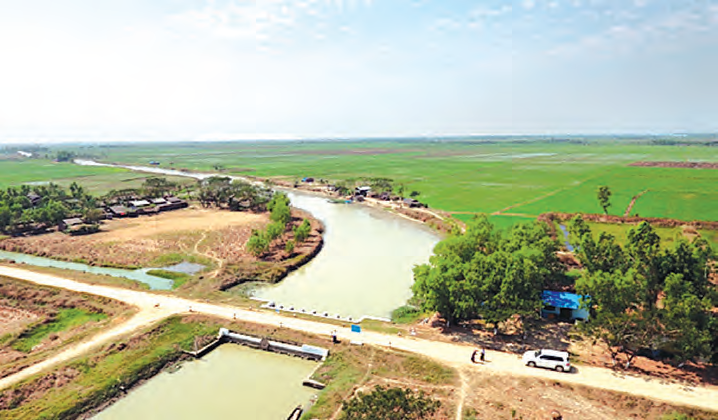World Bank will support the lower Burma Paddyland Development project in order to increase crop production and develop the agricultural sector in Myanmar’s delta regions
4 มีนาคม 2562
To develop the agricultural sector in Myanmar’s delta region, the World Bank supported the Lower Burma Paddyland Development Project, as part of the UN development programme. The Paddy I Project was carried out in Pyapon, Labutta, Ngapudaw, Bogale, and Wakema townships from 1976 to 1985. Paddy II Project was undertaken in Kyaiklat-Maubin, Bogale, Thanlyin, and Labutta townships from 1978 to 1990.
The projects led to the formation of polders to expand agricultural areas, build sluices, canals, and other projects that will help with agriculture and irrigation. This has helped in reducing flooding, controlling freshwater, and enabling seasonal planting which have established the region as a formidable agricultural success for many years.
To ensure successful crop plantations in Myanmar’s vital delta region, authorities regularly implement polders which also expand farmlands and reduce flooding in the surrounding region. The areas near the estuary, especially lowlands nearer to the sea, are prone to flooding from the rising tide or influx of saltwater. To form agricultural lands from these areas, officials survey the land and dig up polders to avert saltwater currents.
The polders gather up rainwater which is directed into nearby creeks to create an arable land in the vicinity. Irrigation experts agree that polders are indispensable for averting flooding and the overwhelming saltwater influx that comes with it.
The delta region with its polders and embankments is divided into three areas: upper region, middle region, and lower region.
In the upper region we have Hinthada, Laymyethna, Zalun, Ngathaingchaung, Yekyi, Kyonpyaw, Sakargyi, Danubyu, Kyaunggon, and Athot townships. In the middle region there is Nyaungdon, Pantanaw, Einme, Shwelaung, Wakema, Maubin, Kyaiklat, Mawlamyinegyun, and Bogale townships. In the lower region there is Pathein, Pyapon, Dedaye, Labutta, Setsan, and Kyonegadun townships. It is these areas that were included in Paddy I and Paddy II projects of the Lower Burma Paddyland Development Project.
While these areas of the delta region were successful in the agricultural sector and possessed numerous natural advantages, the rising tide from the sea and saltwater currents from the estuary and other creeks used to cause long periods of flooding. However, since the introduction and establishment of polders and embankments, the local residents are the first to have seen the great benefits they have brought.
The Union Government and related officials must invest time, labour and resources to maintain the polders in existence and to construct new ones in areas where arable farmlands are needed and protection from flooding is crucial. This will not only develop the socioeconomic value of the region but also increase the food supply of the nation.
Among the delta regions of Southeast Asia, the Ayeyawady delta region has the highest rainfall volume at an average of 100 inches. It can supply the water needed for agriculture and swiftly fulfil the development index. If we can continue to maintain the polders, embankments, and other irrigation measures in the region, we can continue to distinguish the Ayeyawady Region with its preeminent position as the main rice producer of Myanmar.
(Global New Light of Myanmar: http://www.globalnewlightofmyanmar.com/systematic-care-of-polders-will-increase-crop-production/ )











